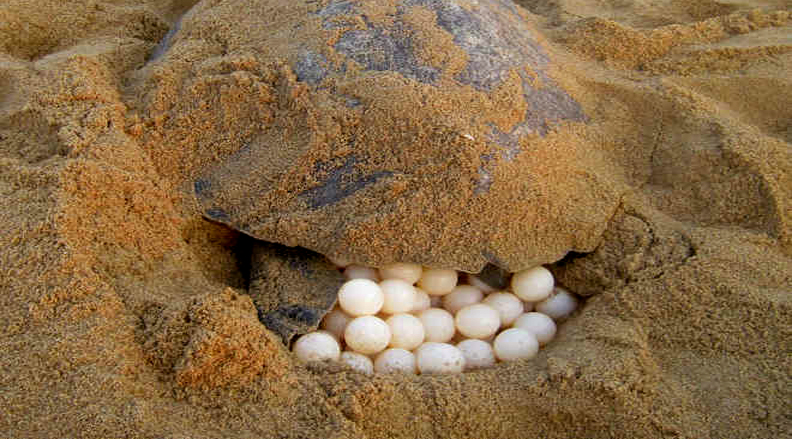Kendrapara: About 3.49 lakh Olive Ridley turtles laid eggs in the recently concluded mass nesting at Nasi-2 beach in Gahirmatha marine sanctuary.
The mass nesting commenced March 10 and concluded March 24, DFO of Rajnagar Mangrove Forest and Wildlife Division Bikash Ranjan Dash said.
He said this time less numbers of endangered Olive Ridley sea turtles reported for laying eggs at Nasi-2, the favourite nesting place of the endangered species within Gahirmatha marine sanctuary.
Last year, over 4.07 lakh Olive Ridley sea turtles had laid eggs at Nasi-2, but this year the mass nesting figure remains only 3.49 lakh, he added.
Dash said an interesting fact is – a couple of sea turtles, which were tagged in 1998-99, also came to lay eggs once again to Gahirmatha Marine sanctuary, the largest rookery of the species.
This proved that tagged female turtles are finding their way to Gahirmatha, where they had congregated earlier for laying eggs. It has been now ascertained that the turtles generally come to the favourite nesting place again and again for laying eggs, the DFO said.
Even, this year, the researchers of Zoological Survey of India have tagged about 1,060 female Olive Ridley sea turtles at the Nasi-2 beach to ascertain their behaviour, migratory route and areas of foraging.
The endangered species rarely turn up in such large numbers anywhere on the planet for laying eggs.
The Gahirmatha marine Sanctuary, instead of being the beacon of life, has turned into a bane of Olive Ridley turtles as more than 10 percent of eggs laid were destroyed due to over layering during the mass nesting period as turtles came to lay eggs on the same spot where other turtles earlier laid eggs .
The turtle usually dig pits with their rear flippers to lay eggs. After laying the eggs in the pits, the female turtles cover the nests with sand and return to the sea in a zigzag manner to confuse predators about the location of the nests.
After laying eggs they returned into the deep sea. Hatchlings emerge from these eggs after 45-60 days and find their way to the sea creating a cacophony.
PNN
